Ditapis dengan

Building humanitarian supply chain relationships: lessons from leading practi…
The purpose of this paper is to advance thought and practice on supply chain relationship building, in the context of humanitarian logistics, drawing on lessons from leading practitioners.
- Edisi
- Vol. 1 No. 1, 2011 pp. 32-49
- ISBN/ISSN
- -
- Deskripsi Fisik
- 21 p .
- Judul Seri
- Journal of Humanitarian Logistics and Supply Chain Management
- No. Panggil
- ATC LO LAC b

Clustering analysis prioritization of automobile logistics services
The purpose of this paper is to provide a clustering approach to segment supply chain partners in the automobile industry and prioritize services offered by third party logistics service (3PL) providers
- Edisi
- Vol. 110 No. 5, 2010 pp. 731-743
- ISBN/ISSN
- 0263-5577
- Deskripsi Fisik
- 15 p.
- Judul Seri
- Industrial Management & Data Systems
- No. Panggil
- ATC LO TRA c C.1
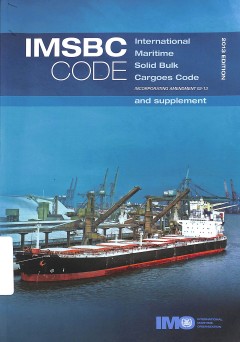
IMSBC code : International maritime solid bulk cargoes code incorporating ame…
- Edisi
- 2013 Ed.
- ISBN/ISSN
- 978-92-801-1587-1
- Deskripsi Fisik
- v, 553 p., 32 cm
- Judul Seri
- -
- No. Panggil
- REF PO IMO i
- Edisi
- 2013 Ed.
- ISBN/ISSN
- 978-92-801-1587-1
- Deskripsi Fisik
- v, 553 p., 32 cm
- Judul Seri
- -
- No. Panggil
- REF PO IMO i
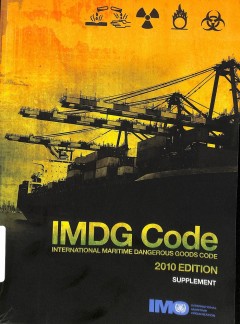
IMDG Code : International maritime dangerous goods code
The International Maritime Dangerous Goods Code lays out the regulatory framework for all aspects of handling dangerous goods and marine pollutants in sea transport, but does not include all details of procedures for packing of dangerous goods or actions to take in the event of an emergency or accident involving personnel associated with the IMDG Code that cover these aspects of the transport o…
- Edisi
- 2010 Editions
- ISBN/ISSN
- 978-92-801-1514-7
- Deskripsi Fisik
- v, 441 hlm., 33 cm
- Judul Seri
- -
- No. Panggil
- REF MR IMO i

The law and partice relating to oil pollution from ships
The book has been arbitrarily split up into three parts. the first part- this is abaut prevention and clean-up, consisting of introduction, operational discharges, accidental discharges, enforcement of operational standart, interviention by a coastal stste, international co-operation, financing a national anti-pollution programme, introduction. The two parts abaut civil liability. and the thr…
- Edisi
- -
- ISBN/ISSN
- 0-406-10105-1
- Deskripsi Fisik
- xxxv, 269 p : 25 cm
- Judul Seri
- -
- No. Panggil
- TXT PO ABE t C.1

Batteries on Ships
The book hs been arbitrarily split up into four parts : the first part covers the larger batteries used for general purposes on board ship usually in the form of a central system, whereas the second part includes the smaller batteries often dedicated to a specific purpuse; the remaining two parts are devoted to the special applications of submarine and submersible propulsion, and torpedo propul…
- Edisi
- -
- ISBN/ISSN
- -
- Deskripsi Fisik
- xii, 203 p., : illus : index : 23 cm
- Judul Seri
- -
- No. Panggil
- TXT PO BAG b c.1
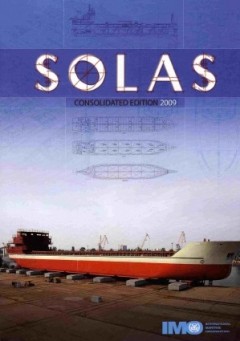
Solas : consolidated edition 2009
Of all the international conventions dealing with maritime safety, the most important is the International Convention for the Safety of Life at Sea, better known as SOLAS, which covers a wide range of measures designed to improve the safety of shipping. The Convention is also one of the oldest of its kind: the first version was adopted in 1914 following the sinking of the Titanic with the loss …
- Edisi
- Fifth Edition
- ISBN/ISSN
- 978-92-801-1505-5
- Deskripsi Fisik
- viii, 418 hlm., 33 cm
- Judul Seri
- -
- No. Panggil
- TXT MR IMO s

General operator's certificate for the global maritime distress and safety sy…
- Edisi
- 2004 Ed.
- ISBN/ISSN
- 978-92-801-4181-8
- Deskripsi Fisik
- v. 368 p., 33 cm
- Judul Seri
- Model Course 1.25
- No. Panggil
- MR IMO g
- Edisi
- 2004 Ed.
- ISBN/ISSN
- 978-92-801-4181-8
- Deskripsi Fisik
- v. 368 p., 33 cm
- Judul Seri
- Model Course 1.25
- No. Panggil
- MR IMO g

Use of the Delphi method to determine the constraints that affect the future …
Who would have foreseen 40 years ago the launching of an 18 000 TEU container ship? The unprecedented growth of such ships presents an increasing challenge for port infrastructure planners. The paper concludes that during the next 20 years, the growth of container ships will depend on factors related to supply and demand, and to external factors. These factors will be defined as the constraints…
- Edisi
- Vol. 42, No. 3,
- ISBN/ISSN
- 263–277
- Deskripsi Fisik
- 16 p.
- Judul Seri
- Maritime Policy & Management
- No. Panggil
- ATC LO PAZ u

The terminalization of supply chains: reassessing the role of terminals in po…
The paper discusses how logistics service providers are using terminals in their supply chains. It argues that an increasing ‘terminalization’ of supply chains is unfolding, whereby seaport and inland terminals are taking up a more active role in supply chains by increasingly confronting market players with operational considerations such as imposing berthing windows, dwell time charges, tr…
- Edisi
- VOL. 36, NO. 2, 165–183
- ISBN/ISSN
- 1464–5254
- Deskripsi Fisik
- 21 p.
- Judul Seri
- Maritime Policy & Management: The flagship journal of international shipping and port research
- No. Panggil
- ATC LO ROD t

The Mobilities of Ships and Shipped Mobilities
In the burgeoning field of mobilities studies, the seas and all that moves in, on, across and through them, have not been embraced with the same enthusiasm as mobilities ashore. While trains (Verstraete 2002), planes (Adey 2010) and automobiles (Merriman 2007) have received sustained attention, alongside walking subjects (Middleton 2009), wired networks (Graham 2002) and mobile ideas (Law 1986)…
- Edisi
- Vol. 9, No. 3, 337–349
- ISBN/ISSN
- 1745-011X
- Deskripsi Fisik
- 14 p.
- Judul Seri
- Mobilities
- No. Panggil
- ATC LO ADD t

The containerships of 1999
Ports are the next candidates for radical change. A jumbo containership can move boxes at sea for less than one cent per ton mile, and fast double-stack trains move them overland for less than three cents. A container can cross the Atlantic for $300, but the terminals consume $500 and too much time. The port of 1999 will work 24 hours and seven days a week. It will be manned by a few well-paid …
- Edisi
- VOL. 16, NO. 2, 133-145
- ISBN/ISSN
- 1464-5254
- Deskripsi Fisik
- 14 p.
- Judul Seri
- Maritime Policy & Management
- No. Panggil
- ATC LO EYR t

Linking ocean container carrier capabilities to shipper–carrier relationshi…
As outsourcing and offshoring continue to expand, the ocean container industry serves a critical and still increasing role in supporting global trade. Yet, perceived commoditization and intense price competition among ocean container carriers limit opportunities for competitive advantage and formation of long-term shipper–carrier relationships. This environment ultimately yields an unhealthy …
- Edisi
- 2016
- ISBN/ISSN
- 1464-5254
- Deskripsi Fisik
- 18 p.
- Judul Seri
- Maritime Policy & Management The flagship journal of international shipping and port research
- No. Panggil
- ATC LO MAL l

Interorganizational Governance Value Creation: Coordinating for Information V…
More thoroughly understanding howinterorganizational governance value can be created by information technology and other governance mechanisms is critical for supply chain management. Based primarily on transaction-cost economics and supplemented by the resource-based view, this study investigates how interorganizational governance (i.e., relational governance and virtual integration) can creat…
- Edisi
- Volume 38 Number 4 November 2007
- ISBN/ISSN
- -
- Deskripsi Fisik
- 28 p.
- Judul Seri
- Interorganizational Governance Value Creation
- No. Panggil
- ATC LO WAN i

Impact of scale increase of container ships on the generalised chain cost
In recent years, an increase in the size of the container ships could be observed. The question is how these larger ships will influence the total generalised costs from a port of loading to a destination in the European hinterland. The second question is whether a scale increase of the container ships on other loops, such as a loop from the United States to Europe, has the same impact on the g…
- Edisi
- Vol. 43, No. 2, 192–208
- ISBN/ISSN
- 1464-5254
- Deskripsi Fisik
- 18 p.
- Judul Seri
- Maritime Policy & Management The flagship journal of international shipping and port research
- No. Panggil
- ATC LO HAS i

Hatchcoverless container ships: productivity gains from a new technology
The hatchcoverless container ship is an innovative design which improves cargo handling productivity. The paper develops a methodology for measuring the gains. the value which will accrue to the company over the life of the vessel.
- Edisi
- Vol. 22, No. 2, 103-114
- ISBN/ISSN
- -
- Deskripsi Fisik
- 13 p.
- Judul Seri
- Maritime Policy & Management: The flagship journal of international shipping and port research
- No. Panggil
- ATC LO BEN h

Analyzing the economic benefit of unmanned autonomous ships: An exploratory c…
Unmanned autonomous ships are seen as a key element of a competitive and sustainable European shipping industry in future. But even if the technology to further automate ships will principally be available at some point, this does not imply that autonomous vessels are also the superior choice for the ship owner. In the end the success of autonomous vessels depends on their impact on the profita…
- Edisi
- 2017
- ISBN/ISSN
- -
- Deskripsi Fisik
- 11 p.
- Judul Seri
- Research in Transportation Business & Management
- No. Panggil
- ATC LO KRE a

Benchmarking the port services: a customer oriented proposal
In recent years, ports have experienced a period of significant growth and development along with intense inter-port rivalry as a consequence of intermodality and hinterland development. It is therefore vital that port management bodies define and implement suitable strategies. This paper aims to adapt the benchmarking technique to the sphere of ports. Compares the activity of a port with tha…
- Edisi
- Vol. 11 No. 3, 2004 pp. 320-330
- ISBN/ISSN
- 1463-5771
- Deskripsi Fisik
- 13 p.
- Judul Seri
- Benchmarking: An International Journal, An International Journal
- No. Panggil
- ATC MG CUA b

Benchmarking the port services: a customer oriented proposal
In recent years, ports have experienced a period of significant growth and development along with intense inter-port rivalry as a consequence of intermodality and hinterland development. It is therefore vital that port management bodies define and implement suitable strategies. This paper aims to adapt the benchmarking technique to the sphere of ports. Compares the activity of a port with that …
- Edisi
- Vol. 11 No. 3, 2004
- ISBN/ISSN
- -
- Deskripsi Fisik
- 13 p.
- Judul Seri
- Benchmarking: An International Journal
- No. Panggil
- ATC LO CER b

Benchmarking the port services: A customer oriented proposal
In recent years, ports have experienced a period of significant growth and development along with intense inter-port rivalry as a consequence of intermodality and hinterland development. It is therefore vital that port management bodies define and implement suitable strategies. This paper aims to adapt the benchmarking technique to the sphere of ports. Compares the activity of a port with that …
- Edisi
- Vol. 11 Iss 3 pp. 320 - 330
- ISBN/ISSN
- 1463-5771
- Deskripsi Fisik
- 10 p.
- Judul Seri
- Benchmarking: An international journal
- No. Panggil
- ATC PO CER b
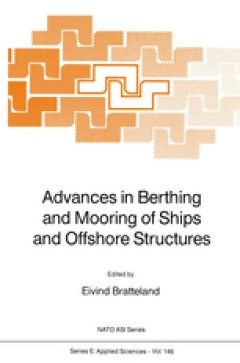
Advances in berthing and mooring of ships and offshore structures
- Edisi
- -
- ISBN/ISSN
- 978-94-010-7129 -1
- Deskripsi Fisik
- -
- Judul Seri
- -
- No. Panggil
- TXT MR BRA a
- Edisi
- -
- ISBN/ISSN
- 978-94-010-7129 -1
- Deskripsi Fisik
- -
- Judul Seri
- -
- No. Panggil
- TXT MR BRA a
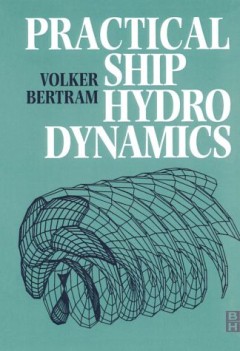
Practical ship hydrodynamics
- Edisi
- -
- ISBN/ISSN
- 0-7506-4851-1
- Deskripsi Fisik
- -
- Judul Seri
- -
- No. Panggil
- TXT PO Ber p
- Edisi
- -
- ISBN/ISSN
- 0-7506-4851-1
- Deskripsi Fisik
- -
- Judul Seri
- -
- No. Panggil
- TXT PO Ber p
Navigation systems, equipment and aids
- Edisi
- Chapter 420
- ISBN/ISSN
- -
- Deskripsi Fisik
- xii, 52 p.
- Judul Seri
- -
- No. Panggil
- TXT MR DIR d
- Edisi
- Chapter 420
- ISBN/ISSN
- -
- Deskripsi Fisik
- xii, 52 p.
- Judul Seri
- -
- No. Panggil
- TXT MR DIR d

A new approach for understanding hindrances to collaborative practices in the…
The paper attempts to determine whether decision-makers in the manufacturing and retailing industry really wish to implement cooperative logistical relationships in the long term.
- Edisi
- Vol. 33 No. 8, 2005 pp. 583-596
- ISBN/ISSN
- 0959-0552
- Deskripsi Fisik
- 16 p.
- Judul Seri
- International Journal of Retail & Distribution Management
- No. Panggil
- ATC LO BON a

Improving Canada’s marine navigation system through e-navigation
The full application and benefits of e-Navigation, as a whole, cannot yet fully be known. Technological developments will continuously change the course of national and international initiatives in the field, and lead the pace of the evolution. However, how countries govern and support the development of e-Navigation is very much within the realm of control. National-level e-navigation governan…
- Edisi
- -
- ISBN/ISSN
- -
- Deskripsi Fisik
- 8 p.
- Judul Seri
- -
- No. Panggil
- ATC MR VAN e

Improving and assessing the impact of e-navigation applications
The scope of this paper is implementation issues of the e-Navigation concept of the International Maritime Organization (IMO). IMO has adopted the e-Navigation strategic implementation plan (SIP) in 2014. This plan, i.a., bases on estimating the effect of e-Navigation applications on reducing navigational accidents, including collisions and groundings of ships falling under the International Co…
- Edisi
- -
- ISBN/ISSN
- -
- Deskripsi Fisik
- 12 p .
- Judul Seri
- -
- No. Panggil
- ATC MR BAE i
Shipboard cargo handling safety guide
This new publication of “Shipboard Cargo Handling Safety Guide” isbased on the safety guide of the same title issued by this department in 1982, and revised with updated safety and health basic knowledge by the Transport & Physical Distribution Industry Safety & Health Committee of the Occupational Safety & Health Council to finalize the edition. The Occupational Safety & Health Council pub…
- Edisi
- -
- ISBN/ISSN
- -
- Deskripsi Fisik
- 55 pages
- Judul Seri
- -
- No. Panggil
- TXT LO MAR s
The Ultimate Guide to Personal Safety On board Ships
While writing this e-book, we have considered that safe practices are not only for engine or deck crew but also for each and every person who boards the ship or sails with the same. It doesn’t matter if you belong to deck, engine, or galley department, when safety of the crew and the ship is at stake, a well planned team effort is what helps to overcome or fight an emergency situation. For a…
- Edisi
- First Edition
- ISBN/ISSN
- -
- Deskripsi Fisik
- 91 pages
- Judul Seri
- -
- No. Panggil
- TXT LO WAN t

Increased collaborative relationships in international logistics: Canadian an…
This article argues that the increased competition and uncertainties faced by corporations and countries as a result of the globalisation and volatility of world trade in the first decade of this century have resulted in new collaborative relationships in international logistics. Evidence, largely from Canada, identifies shifts in corporate relationships. The changes are consistent with expecta…
- Edisi
- -
- ISBN/ISSN
- -
- Deskripsi Fisik
- 17 p.
- Judul Seri
- Maritime Policy & Management
- No. Panggil
- ATC LO HEA i

Total system JIT outcomes: inventory, organization and financial effects
Despite anecdotal evidence of the performance implications of just‐in‐time (JIT) implementation, little empirical research has been conducted. Examines total system JIT’s empirical relationships with a variety of performance outcomes. Total system JIT encompasses JIT purchasing, JIT production, and JIT selling. In a mail survey of 200 logistics executives, total system JIT was found to be…
- Edisi
- Vol. 29 Issue: 10, pp.612-630
- ISBN/ISSN
- -
- Deskripsi Fisik
- 23 p.
- Judul Seri
- International Journal of Physical Distribution & Logistics Management
- No. Panggil
- ATC LO CLA t

Determinants of the probability of ship injuries
This study investigates determinants of the probability that an individual on board a ship of a given shipping line will be injured (given that the ship is not involved in an accident). A Probit regression statistical model is used to investigate such determinants when ships are in port and on given types of containerships. Probit estimation results suggest that an individual is less likely to …
- Edisi
- Volume 25 Number 2 December 2009 pp.171-188
- ISBN/ISSN
- -
- Deskripsi Fisik
- 18 p.
- Judul Seri
- -
- No. Panggil
- ATC PO TAL d

Carrier involvement in buyer-supplier strategic partnerships
Refers to the recent trend to utilize strategic alliances and partnerships for securing both goods and services. Additionally, the supply chain management concept is gaining more acceptance as a method of sustaining a competitive advantage in global markets. Although the literatur explores strategic partnerships within both the buyer and supplier context and the shipper and logistics context, t…
- Edisi
- Vol. 26 Iss 3 pp. 14-25
- ISBN/ISSN
- -
- Deskripsi Fisik
- 10 p.
- Judul Seri
- Logistics Information Management
- No. Panggil
- ATC MG GEN c

Pitfalls in logistics partnerships
In 1973, Distribution magazine published an article by a public warehousing executive which stated the opinion that the relationship between the public warehouse operator and the customer should be one of partnership. An angry response was later published as a letter to the editor. The writer was a food industry logistics executive who also was former editor of the magazine. His attack on the a…
- Edisi
- Vol. 26 No. 3, 1996
- ISBN/ISSN
- -
- Deskripsi Fisik
- 6 p .
- Judul Seri
- International Journal of Physical Distribution & Logistics Management
- No. Panggil
- ATC LO ACK p

Carrier involvement in buyer-supplier strategic partnerships
Refers to the recent trend to utilize strategic alliances and partnerships for securing both goods and services. Additionally, the supply chain management concept is gaining more acceptance as a method of sustaining a competitive advantage in global markets. Although the literature explores strategic partnerships within both the buyer and supplier context and the shipper and logistics context, …
- Edisi
- Volume 9 · Number 6 · 1996 · 54–61
- ISBN/ISSN
- -
- Deskripsi Fisik
- 10 p.
- Judul Seri
- Logistics Information Management
- No. Panggil
- ATC LO GEN c

Partnerships in UK defense procurement
Since the 1998 Strategic Defense Review, the UK Government reversed its competition policy and now seeks to improve defense procurement relationships with industry through partnering. However, at a time when the defense industries are concentrating and globalizing and more and more of the large contracts are being managed under monopoly conditions, substantive relationship improvements are hard…
- Edisi
- Vol. 12 Issue: 1, pp.83-96
- ISBN/ISSN
- -
- Deskripsi Fisik
- 16 p .
- Judul Seri
- The International Journal of Logistics Managemen
- No. Panggil
- ATC LO HUM p

Supplier relationship management as a macro business process
Increasingly, supplier relationship management (SRM) is being viewed as strategic, process-oriented, cross-functional, and value-creating for buyer and seller, and a means of achieving superior financial performance. This paper seeks to describe a macro level cross-functional view of SRM and to provide a structure for managing business-to-business relationships to co-create value and increase …
- Edisi
- Vol. 17 Iss 3 pp. 337 - 352
- ISBN/ISSN
- -
- Deskripsi Fisik
- 18 p.
- Judul Seri
- Supply Chain Management: An International Journal
- No. Panggil
- ATC LO SCH s

Strategic responses to power dominance in buyer-supplier relationships
The purpose of this paper is to identify the strategic options available to a weaker actor to counteract the dominance of a stronger actor in a buyer-supplier relationship, and identifies those factors that influence the choice of individual options.
- Edisi
- Vol. 45 No. 1/2, 2015
- ISBN/ISSN
- -
- Deskripsi Fisik
- 25 p.
- Judul Seri
- International Journal of Physical Distribution & Logistics Management
- No. Panggil
- ATC LO PIL s

Developing a scale for proactive improvement within logistics outsourcing rel…
The purpose of this paper is to establish a scale for the measurement of proactive improvement, in general, and then more specifically in terms of cost- and service-focused improvement in logistics outsourcing arrangements.
- Edisi
- Vol. 21 No. 1, 2010
- ISBN/ISSN
- -
- Deskripsi Fisik
- 19 p.
- Judul Seri
- The International Journal of Logistics Management
- No. Panggil
- ATC LO CAH d

A supply chain diagnostic tool
How can a third-party logistics (3PL) provider decide whether or not there is a viable opportunity to serve the needs and desires of potential clients? To answer this question, a tool is needed that can help determine if there are problems, inefficiencies, or needed improvements in a client’s, or a potential client’s, supply chain that the 3PL can effectively address. Most diagnostic tools …
- Edisi
- Vol. 34 Iss 10 pp. 827 - 855
- ISBN/ISSN
- 0960-0035
- Deskripsi Fisik
- 31 p.
- Judul Seri
- International Journal of Physical Distribution & Logistics Management
- No. Panggil
- ATC LO FOG a

A review of the transportation mode choice and carrier selection literature
The purpose of this paper is to categorize transportation choice research (mode choice and carrier selection) leading to insight on themes in the literature and directions for future research
- Edisi
- Vol. 19 No. 2, 2008 pp. 183-211
- ISBN/ISSN
- 0957-4093
- Deskripsi Fisik
- 33 p.
- Judul Seri
- The International Journal of Logistics Management
- No. Panggil
- ATC LO MEI a

Rigor in qualitative supply chain management research: Lessons from applying …
The purpose of this paper is to share the authors’ experiences of using the repertory grid technique in two supply chain management studies. The paper aims to demonstrate how the two studies provided insights into how qualitative techniques such as the repertory grid can be made more rigorous than in the past, and how results can be generated that are inaccessible using quantitative methods.
- Edisi
- Vol. 42 No. 8/9, 2012
- ISBN/ISSN
- -
- Deskripsi Fisik
- 26 p.
- Judul Seri
- International Journal of Physical Distribution & Logistics Management
- No. Panggil
- ATC LO CLA r

Organization-environment relationships : theory for management practice in hu…
The article discusses lessons for executive directors in human service organizations, for managing organization-environment relationships. The first section reviews the three main theories of organizationenvironment relations: ecological theories, institutional theories, and adaptation theories (with emphasis on the political-economy and resource-dependency perspectives). Following this present…
- Edisi
- Vol. 28(1) 2004
- ISBN/ISSN
- 0364-3107
- Deskripsi Fisik
- 18 p.
- Judul Seri
- -
- No. Panggil
- ATC MG SCH o

Piracy and shipowners' ethical dilemmas
The purpose of this paper is to use virtue ethics to explore the dilemmas arising for shipowners facing the piracy threat off the coast of Somalia.
- Edisi
- -
- ISBN/ISSN
- -
- Deskripsi Fisik
- 13 p.
- Judul Seri
- -
- No. Panggil
- ATC MR WAR p

Justification and evaluation of dry port investments in Russia
The hinterland infrastructure (e.g. dry ports that tend to bond railways, seaports, warehouses and roads) is one of the vulnerable points of the national economics. In the deficit of financial resources, the modernisation of the current assets and realisation of the new major projects are possible through public private partnerships (PPPs). Notably, the attention is focussed on the options for …
- Edisi
- -
- ISBN/ISSN
- -
- Deskripsi Fisik
- 10 p.
- Judul Seri
- -
- No. Panggil
- ATC PO PEK j

Battening down the hatches : how should the maritime industries weather the �…
This paper investigates the major impacts of the financial tsunami on the maritime industries, notably port and shipping. The maritime industries are still reeling from market declines, with stakeholders still attempting to weather the storm as best as they can through various strategies. However, such strategies are not uniform, where significant diversifications have been noted between maj…
- Edisi
- -
- ISBN/ISSN
- -
- Deskripsi Fisik
- 6 p.
- Judul Seri
- Research in Transportation Economics
- No. Panggil
- ATC MR SLA b

Public-private partnerships for the provision of port infrastructure: an expl…
Public-private cooperation on the level of project finance, and provision of large-scale infrastructure projects, is increasing on the global level. This paper uses a multi-actor analysis, in order to explore the critical success factors (CSFs) for sound implementation of public-private partnerships (PPPs) in the port context, and to determine the diverging opinions of stakeholders with regard …
- Edisi
- vol.30
- ISBN/ISSN
- -
- Deskripsi Fisik
- 26 p.
- Judul Seri
- -
- No. Panggil
- ATC PO AER p

North American inland port development: international vs domestic shipper pre…
Changes in US transportation policy and changing freight flows influenced by NAFTA have refocused the attention of interior states on their transportation infrastructure. Shippers in the landlocked Midwest of the USA have inquired into the feasibility of inland ports that better facilitate domestic and global commerce by providing shared facilities and services. As such, these inland ports repr…
- Edisi
- Vol. 34 No. 7, 2004 pp. 579-597
- ISBN/ISSN
- -
- Deskripsi Fisik
- 21 p .
- Judul Seri
- International Journal of Physical Distribution & Logistics Management
- No. Panggil
- ATC LO POI n

Obstacles to supply chain integration of the performance management process i…
The purpose of this paper is to explain to what degree supplier relationship obstacles and operational tool obstacles hinder supply chain integration of the performance management (PM) process.
- Edisi
- Vol. 29 No. 1, 2009 pp. 77-95
- ISBN/ISSN
- -
- Deskripsi Fisik
- 22 p.
- Judul Seri
- International Journal of Operations & Production Management
- No. Panggil
- ATC LO JON o

Towards a New Era in Ship Registration
Purpose – In the aftermath of the financial crisis, flagging behaviour exhibits different features than before. The purpose of this paper is to examine the current ship registration situation and particularly the impact of the 2008 financial crisis on flagging behaviour in light of national characteristics. Design/methodology/approach – The paper provides an overview of ship registration…
- Edisi
- Vol. 24 Iss 1 pp
- ISBN/ISSN
- 0957-4093
- Deskripsi Fisik
- 19 p
- Judul Seri
- The International Journal of Logistics Management
- No. Panggil
- ATC LO HAI t

Benchmarking of marine bunker fuel suppliers: the good, the bad, the ugly
The purpose of this paper is to construct a realistic best practice benchmark and develop a methodology for comparison of individual suppliers of marine bunker fuel. As is well-known in this trade, unfair business behaviors in the bunker fuel market are not uncommon, resulting in financial losses for the buyers
- Edisi
- Vol. 19 Iss 1
- ISBN/ISSN
- 1463-5771
- Deskripsi Fisik
- 19 pages
- Judul Seri
- Benchmarking: An International Journal
- No. Panggil
- ATC MR ANF b
 Karya Umum
Karya Umum  Filsafat
Filsafat  Agama
Agama  Ilmu-ilmu Sosial
Ilmu-ilmu Sosial  Bahasa
Bahasa  Ilmu-ilmu Murni
Ilmu-ilmu Murni  Ilmu-ilmu Terapan
Ilmu-ilmu Terapan  Kesenian, Hiburan, dan Olahraga
Kesenian, Hiburan, dan Olahraga  Kesusastraan
Kesusastraan  Geografi dan Sejarah
Geografi dan Sejarah